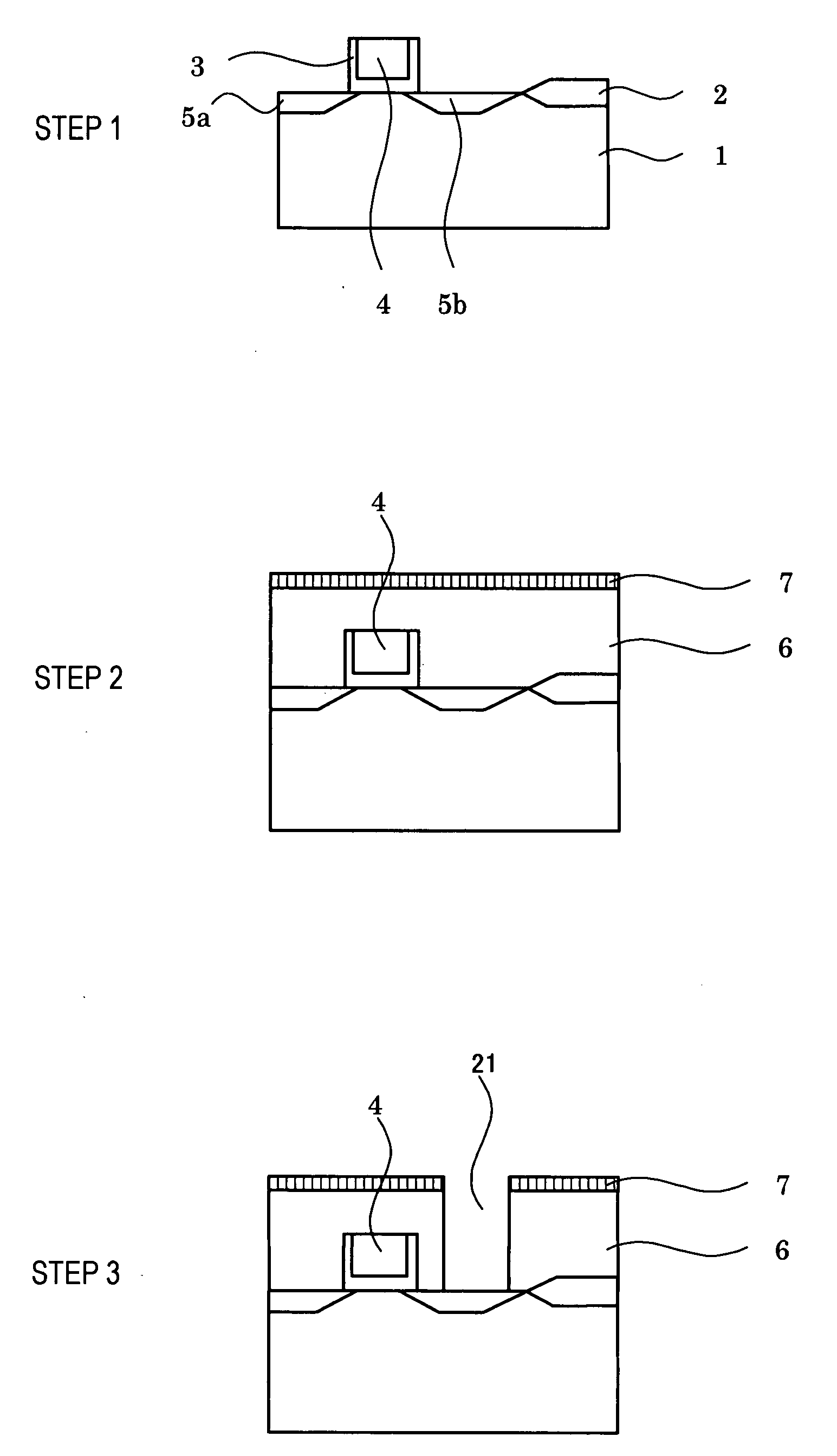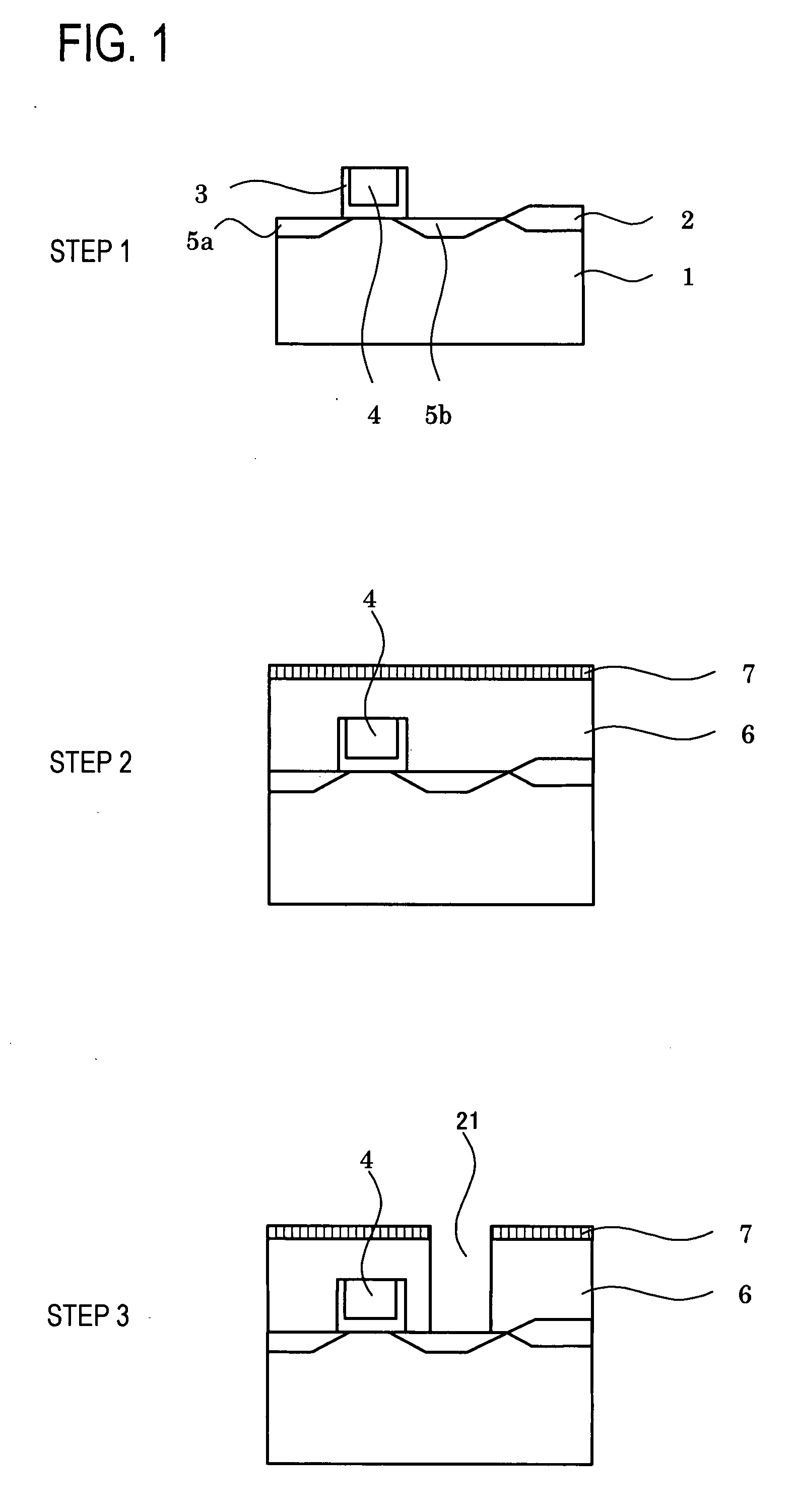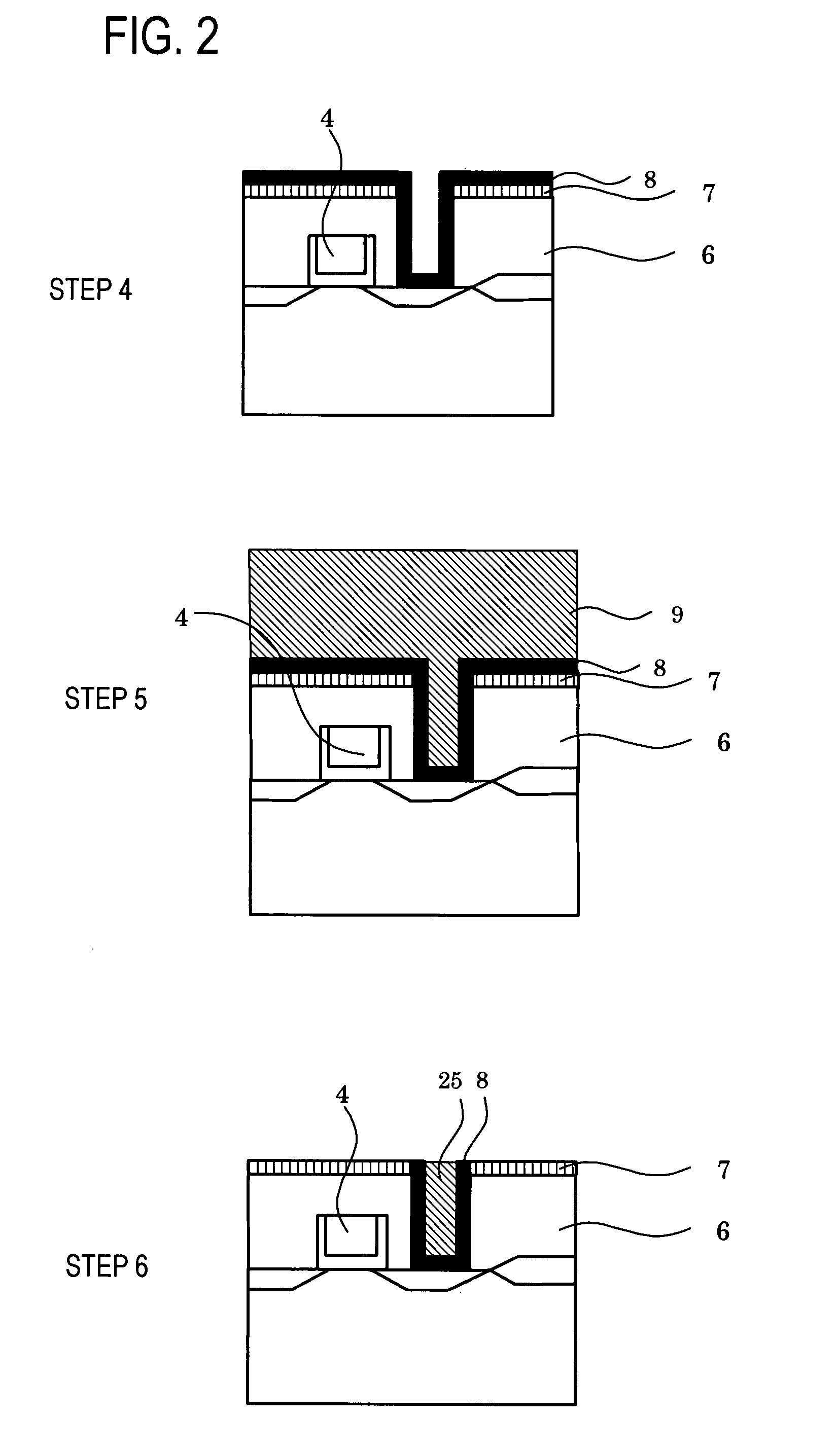Roughness reducing film at interface, materials for forming roughness reducing film at interface, wiring layer and semiconductor device using the same, and method for manufacturing semiconductor device
a technology of roughness reducing film and roughness, which is applied in the direction of semiconductor devices, semiconductor device details, electrical apparatus, etc., to achieve the effects of high tddb resistance, high reliability of semiconductors, and small electric power consumption
- Summary
- Abstract
- Description
- Claims
- Application Information
AI Technical Summary
Benefits of technology
Problems solved by technology
Method used
Image
Examples
example 1
[0076]A coating-type low dielectric constant insulating material comprising a silicon-containing compound and having a low relative dielectric constant of 2.5 was applied onto a low-resistant substrate to a thickness of 250 nm by spin coating, the substrate was subjected to prebaking at 250° C. for three minutes, and then, cured in an electric oven under a nitrogen atmosphere at 400° C. for 30 minutes. Afterwards, etching was performed on the whole surface to a depth of 200 nm.
[0077]A sample which had not been subjected to any other treatment in the later stage was called sample 1; a sample which had been subjected only to baking at 250° C. for 1 minute without any spin coating was called sample 2; a sample which had been subjected only to spin coating with HMDS (hexamethyldisilazane) was called sample 3; a sample which had been subjected to spin coating with HMDS, followed by baking at 250° C. for 1 minute was called sample 4; a sample which had been subjected to spin coating with ...
example 2
[0081]FIGS. 1-10 show how an example of a multilayer wiring structure according to the present invention is manufactured. First, on a silicon wafer 1 on which formed was a transistor layer having a gate electrode 4 with a source diffusion layer 5a, drain diffusion layer 5b and sidewall insulator film 3 (step 1) and being separated by an element separation film 2, an interlayer insulation film 6 (phosphorus glass) and a stopper film 7 were formed (step 2), and then, a contact holes 21 for leading to electrodes were formed (step 3).
[0082]TiN 8 in a thickness of 50 nm was formed in these contact holes by a sputtering method (step 4). A mixture of WF6 and hydrogen was then reduced to form (fill in) conductor plugs 9 (step 5), the part other than via holes 25 was removed by CMP (step 6). Subsequently, a low dielectric constant coating (insulator film for wiring separation) 10 was formed so that the surface of the coating was 250 nm over the silicon wafer plane, followed by lamination of ...
example 3
[0089]A three-layer wiring structure was formed in the same way as in EXAMPLE 2, except that the interfacial roughness reducing films 12, 20 were made using sample 6 of EXAMPLE 1. The same TDDB measurement was conducted using the comb-shaped pattern for the experimentally manufactured multi-layer wiring structure. The median value until the breakdown was 426 seconds.
PUM
 Login to View More
Login to View More Abstract
Description
Claims
Application Information
 Login to View More
Login to View More - R&D
- Intellectual Property
- Life Sciences
- Materials
- Tech Scout
- Unparalleled Data Quality
- Higher Quality Content
- 60% Fewer Hallucinations
Browse by: Latest US Patents, China's latest patents, Technical Efficacy Thesaurus, Application Domain, Technology Topic, Popular Technical Reports.
© 2025 PatSnap. All rights reserved.Legal|Privacy policy|Modern Slavery Act Transparency Statement|Sitemap|About US| Contact US: help@patsnap.com



